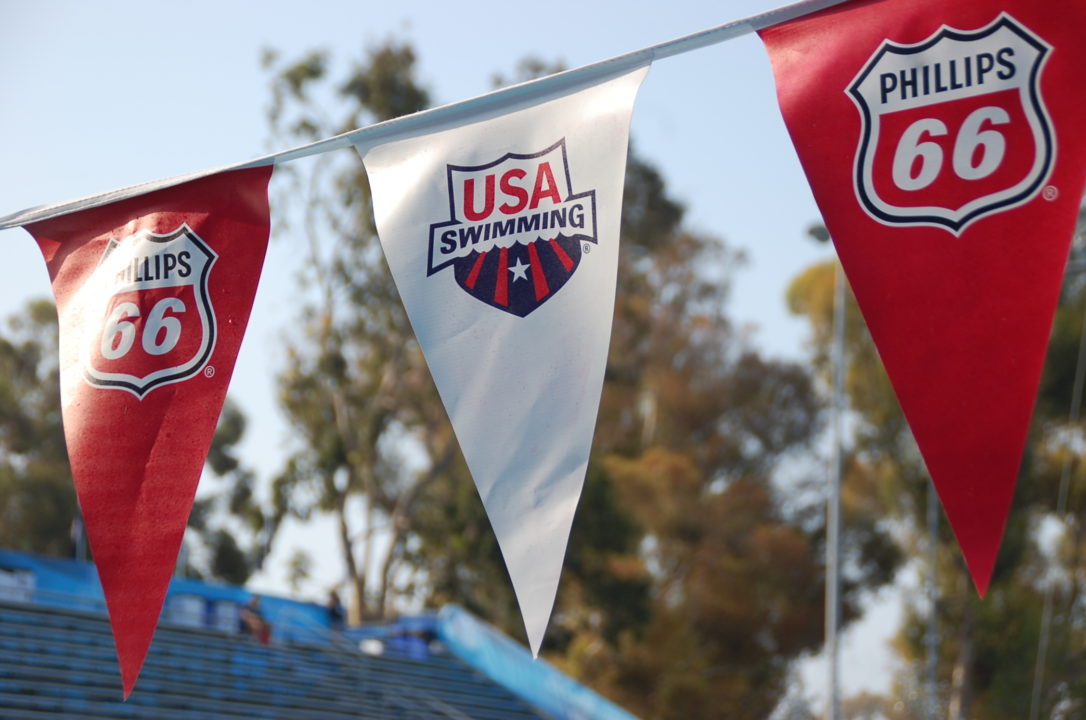USA Swimming is proposing a stark increase in dues paid by member clubs beginning in the 2025-26 season.
The national governing body is proposing clubs pay an additional $155 annually, from $70 to $225, which would mark the first increase in annual dues since at least 1990.
The more sizable change comes for first-year clubs, which would have to pay $700 for their first three years, a 900% increase, under the proposal.
An increase to $250 annually for clubs beginning in 2021 was proposed in 2019 but didn’t come to fruition due to the COVID-19 pandemic.
| Annual Fee | 1990-2024 | Proposed change |
| Year-round clubs | $70 | $225 |
| New clubs | $70 | $700 for first three years |
Note that these numbers do not include the annual $50 fee clubs pay LSCs. In total, year-round clubs would have a $275 annual fee and new clubs would pay $750 for their first three years of existence.
In USA Swimming’s Board of Directors meeting in April, recommendations for club membership fee changes were presented by Ira Klein with the objective of using the increased fees to pay for increased club visits and in-person national events.
The proposal is also listed in USA Swimming’s Proposed Legislation for 2024, set to be voted on at its Annual Business Meeting in September.
The proposal notes that for new clubs, USA Swimming staff “may determine reduced fees for new clubs based on outreach membership and, or geographic isolation.”
In 2023, USA Swimming reported it had 2,579 year-round clubs. At that number, the revenue for USA Swimming from dues paid by clubs would see an increase of $399,745, from $180,350 to $580,275, annually, if the proposal passes (not including first-year clubs).
In the proposal for the increased club dues, USA Swimming outlined the results of a coach’s survey taken during the 2022-23 season. Coaches called for the following changes:
- More visits from USA Swimming to LSCs
- Alignment with LSCs on serving clubs
- More club visits to variety of club sizes
- More listening to coaches at local level
- More recognition of clubs (especially those producing at an age group level)
- Regular meetings in LSC with coaches and LSC Boards
- In-person coach education
- Include coaches in decision-making process, both in-person and broad grassroots participation
- Help when clubs are facing significant challenges around facilities, board changes, etc.
The uptick in club dues comes to provide increased services, with the proposal also noting the extra $155 per club helps adjust the annual fees for inflation.
The “increased services” will include:
- An increase in LSC/club visits ($150,000 investment)
- Investing in the Club Excellence Program model ($150,000)
- Increasing the USA Swimming app functionality for coaches ($120,000)
- Increased financial support for home coaches at USA Swimming camps ($45,000)
- Helping new clubs find success ($30,000)
- Providing additional teams-in-crisis services ($30,000)
The total investment of the six proposed increased services totals $525,000, suggesting new clubs could provide somewhere in the vicinity of $125,000 in increased revenue.
If ultimately passed, the dues increase would begin September 1, 2025. The increased service programs would be piloted through August 2025 before being fully implemented in the 2026 membership year.
The proposal for increased club fees comes after USA Swimming saw a 4.61% decline in membership in 2023, losing an approximate 18,000 swimmers. The membership retention rate of 68.9% was the lowest on record since 2019.
USA Swimming has struggled since the pandemic, including losing $17 million in assets in 2022.
USA Swimming’s Annual Business Meeting is scheduled for September 26-28 in Denver.

This did not age well especially after how the US has done at the Olympics….
What are we getting for that? Have any of you ever tried to call the national office? I have probably 4-5 times over the past 3 years. Never once talked to anyone, once got an email sent to me! Time to go back to AAU or start something new!
Maybe a new organization could be created to compete with this clearly out of touch organization.
Their should be a tiered club renewal fee. More kids on a team, higher renewal. Why are they going to charge a club with 100 kids the same as a club with a 1,000 kids. Is USAS visiting clubs equally or larger teams more often? A flat fee increase is not equitable.
I’m surprised that there has not been an increase since at least 1990. It sucks, but I get it. It should be a gradual increase over the course of like three years where it goes up to $125 in the first year, $175 in the second year, and $225 in the third year.
This is outrageous!
34 FELONIES
It is our understanding that the board of directors is currently split on whether to renew or not. 1 or 2 votes will likely make the difference.
They have the opportunity to make a significant change in direction for the good of the sport at whole. I hope they do the right thing